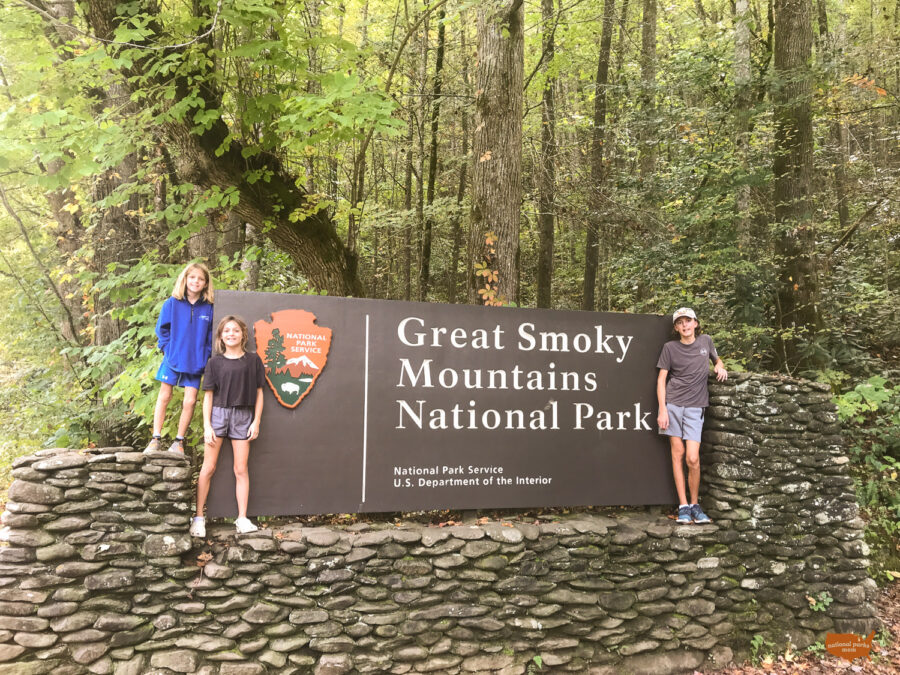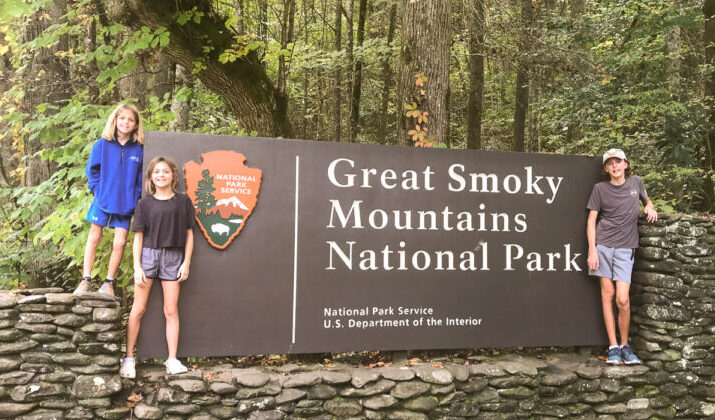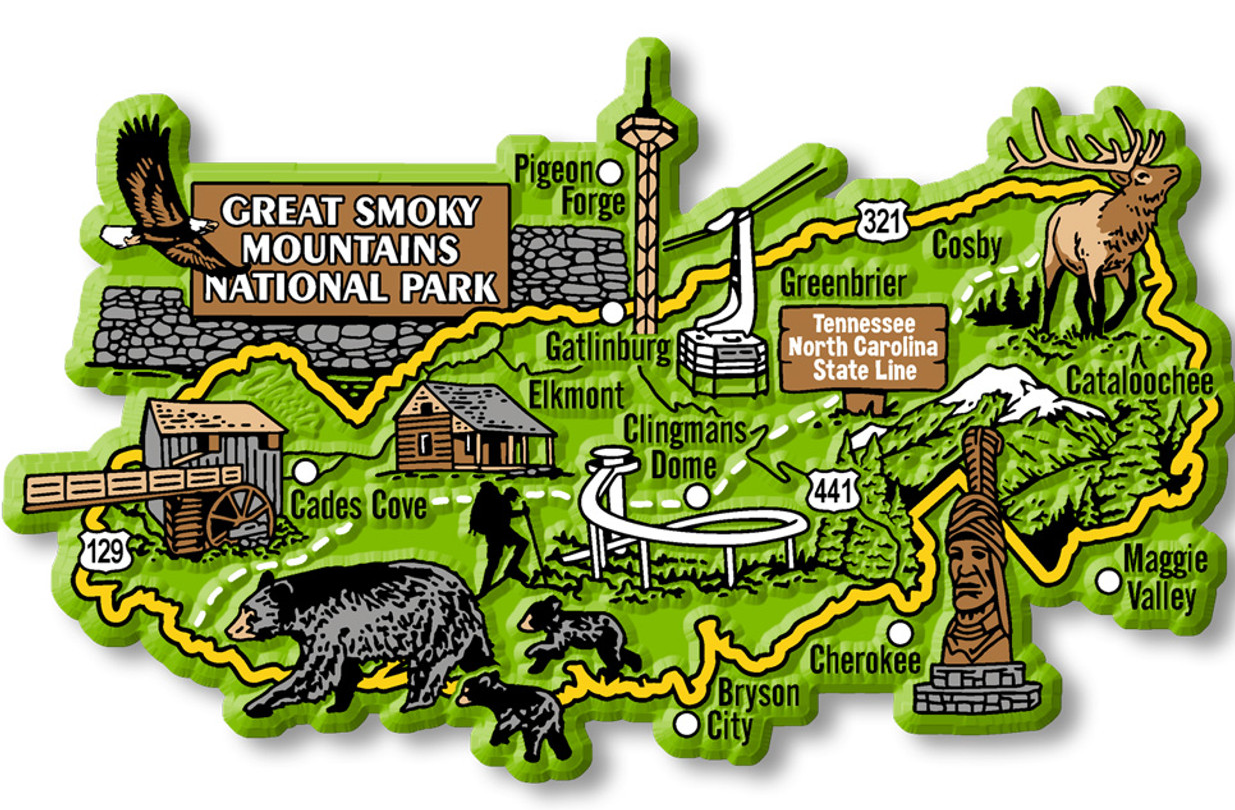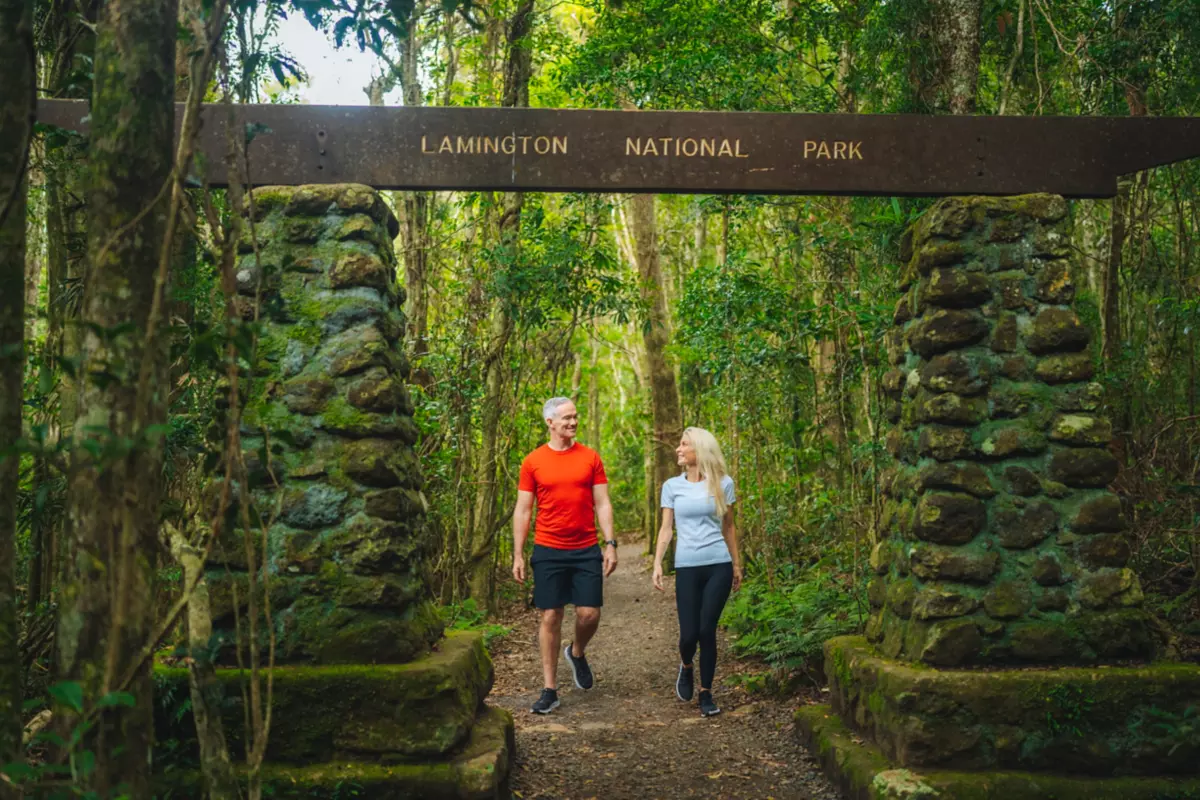When it comes to exploring the wilderness and natural beauty of the Great Smoky Mountains, the best trails to hike in the smoky mountains offer an extraordinary experience for adventurers of all levels. Nestled between North Carolina and Tennessee, this iconic national park features an extensive network of trails that vary from easy walks to strenuous hikes. Whether you’re seeking a leisurely stroll through lush forests or an exhilarating climb to breathtaking vistas, the Smokies have something for everyone.

Top Backpacking Trails in the Smoky Mountains
Backpacking in the Smoky Mountains is an experience that connects you with nature in an unforgettable way. To truly appreciate the majesty of this region, embarking on multi-day treks allows hikers to immerse themselves in the park’s diverse ecosystems and stunning landscapes.
Why Choose Backpacking?
The allure of backpacking lies in the independence it offers. Unlike day hikes, backpacking trips let you explore secluded areas where few tourists venture. You’ll discover hidden waterfalls, pristine lakes, and wildlife unbothered by human activity.
Additionally, spending multiple days in the backcountry provides the chance to connect with fellow adventurers around the campfire, sharing stories and experiences while soaking in the serenity of the Smokies. The challenges of carrying your gear and navigating the trails only add to the sense of accomplishment upon completing your journey.
Recommended Backpacking Routes
1. Appalachian Trail (AT)
The Appalachian Trail runs for approximately 71 miles through the Great Smoky Mountains National Park. It attracts thousands of hikers each year who want to experience this iconic trail. The segment within the Smokies offers various access points, allowing for both short and long backpacking adventures.
This part of the AT takes you through diverse terrains, including dense forests filled with rhododendrons and streams that wind their way through stunning valleys. Along the way, you’ll encounter some of the best scenic overlooks, such as Clingmans Dome, the highest point in the Smokies.
2. Lakeshore Trail
The Lakeshore Trail spans about 30 miles along the shores of Fontana Lake, making it one of the most picturesque backpacking routes in the park. This trail features relatively gentle terrain and is dotted with campsites that provide access to the lake’s shimmering waters.
As you trek, you’ll be rewarded with incredible views of the water surrounded by rolling hills. Keep an eye out for birdlife and other wildlife that frequent the area — it’s an ideal spot for nature photography!
3. Chimney Tops Trail to Road Prong Trail Loop
For those looking for a challenging adventure, the Chimney Tops Trail to Road Prong Trail loop offers not only a test of endurance but also spectacular rewards. This 12-mile loop takes you to some of the park’s most dramatic landscapes, including steep ridges and rocky outcrops.
The ascent to Chimney Tops involves a strenuous climb but is well worth the effort. Once at the top, you’ll be greeted with panoramic views of the surrounding peaks and valleys. The descent via Road Prong Trail leads you through tranquil forests, providing an opportunity for reflection after conquering the climb.
Essential Gear and Preparation
When preparing for a backpacking trip in the Smoky Mountains, having the right gear is crucial for both comfort and safety. Invest in a good-quality backpack that fits properly, as well as lightweight camping equipment. Consider bringing a portable stove, high-energy snacks, and enough water purification supplies to last throughout your trek.
Research the weather conditions before heading out. The Smokies can experience rapid changes in weather, so layering your clothing will help you adapt to fluctuating temperatures. Lastly, familiarize yourself with the park’s rules regarding camping, trail usage, and wildlife encounters.
Highest Hike in the Smoky Mountains

Standing tall among the peaks of the Smoky Mountains, Clingmans Dome reigns as the highest point in the park and offers an unforgettable hiking experience. At an elevation of 6,643 feet, this summit provides hikers with sweeping views of the surrounding mountain ranges and valleys.
Clingmans Dome Trail
Overview of the Trail
The Clingmans Dome Trail is a paved, half-mile path that leads directly to the observation tower located at the summit. Although the distance may seem short, the steep incline tests even seasoned hikers. The trail begins from the Clingmans Dome parking area, which is accessible by vehicle during the warmer months.
The primary goal of hiking this trail is to reach the observation tower, which features a spiral ramp that allows visitors to ascend to a platform overlooking the landscape. On clear days, you can see up to 100 miles into North Carolina and Tennessee.
Scenic Views and Landmarks
While the climb to Clingmans Dome is challenging, the reward at the top is nothing short of awe-inspiring. You’ll witness the natural beauty of the Smokies, with layers of blue-hued mountains cascading into the horizon. As you take in the view, keep an eye out for notable landmarks like Mount LeConte and Cades Cove in the distance.
Sunrise and sunset hikes are particularly popular here, as the changing light creates a magical atmosphere across the mountain ranges. Be sure to arrive early or stay late to capture the stunning colors that paint the sky.
Wildlife Encounters
Clingmans Dome is home to a variety of wildlife species, including black bears, deer, and numerous birds. While hiking the trail, remain vigilant and respectful of the animals’ habitats. If you’re lucky, you might catch glimpses of critters as they go about their daily routines.
Remember, the park advises adhering to proper wildlife etiquette — do not feed the animals or approach them too closely. Respectful behavior ensures both your safety and the well-being of the creatures that inhabit the Smokies.
Hardest Trail in Great Smoky Mountains

For experienced hikers looking for a daunting challenge, the hardest trail in Great Smoky Mountains is none other than the infamous “A.T. – 10-Mile Section.” This strenuous trek stretches approximately 10 miles and is known for its steep ascents, rugged terrain, and demanding conditions.
Overview of the Trail
The A.T. – 10-Mile Section begins near Newfound Gap and traverses the Smokies’ iconic Appalachian Trail. Known for its difficulty, this section includes a relentless uphill climb, testing stamina and determination. The elevation gain can be quite significant, adding to the challenge as hikers navigate rocky outcroppings and roots underfoot.
Navigation and Terrain
One of the key factors contributing to the difficulty of this trail is the uneven terrain. Sections are rocky and steep, requiring careful foot placement to avoid slips and falls. Additionally, the trail can be narrow, leading to a sense of exposure in certain areas.
Navigational skills are essential when tackling this hike. Carry a reliable map or GPS device, and ensure you understand the trail’s layout before beginning your journey.
Tips for Conquering the Challenge
To successfully complete the A.T. – 10-Mile Section, preparation is key. Train adequately before attempting the hike by building endurance on shorter, similar trails. This helps acclimate your body to the physical demands required for the arduous trek.
Pack ample water, snacks, and a first-aid kit to address any minor injuries that may occur during the hike. Hiking with a buddy or group is always recommended, as it enhances safety and provides encouragement along the way.
Best Trails in the Smoky Mountains for Beginners
The Smoky Mountains are a treasure trove of trails suitable for beginners seeking to explore the great outdoors. These paths allow novice hikers to enjoy the beauty of the park without the stress of strenuous climbs or technical obstacles.
Recommended Beginner-Friendly Trails

1. Laurel Falls Trail
Laurel Falls is one of the most popular short hikes in the Smoky Mountains, and for good reason. This 2.6-mile round-trip trail leads you to the park’s tallest waterfall, showcasing a beautiful cascade of water over large boulders.
The trail is paved, making it accessible for families and individuals who may have mobility concerns. As you walk, you’ll be enveloped by the sounds of nature—the rustling of leaves, chirping birds, and the soothing rush of water enhancing your experience.
2. Gatlinburg Trail
The Gatlinburg Trail is another excellent choice for beginner hikers. Spanning approximately 3.8 miles one way, this trail follows the West Fork of the Little Pigeon River, offering scenic views of the riverbanks and towering trees.
With minimal elevation gain, this trail is perfect for casual walks or family outings. Along the route, you’ll find benches to rest and enjoy the peaceful surroundings, making it a great option for leisurely exploration.
3. Cove Hardwoods Nature Trail
The Cove Hardwoods Nature Trail is a short, circular path that showcases the impressive biodiversity of the Smokies. This 1-mile loop introduces hikers to the unique plant life found in the cove hardwood forest ecosystem, making it a perfect educational experience for families.
Interpretive signs along the trail highlight different tree species and their ecological importance, enhancing the hiking experience. The easy terrain and informative content make it a great option for hikers of all ages.
Safety Tips for Beginner Hikers
While these trails are designed with beginners in mind, it’s still important to prioritize safety. Always wear sturdy footwear with good traction to prevent slipping. Carry a small daypack with water, snacks, sunscreen, and a basic first-aid kit, ensuring you’re prepared for anything that may arise.
Additionally, inform someone of your plans before heading out, as this precautionary measure adds an extra layer of safety. Finally, remember to respect the park’s rules and regulations to help preserve the beauty of the Smoky Mountains for future generations.
Family-Friendly Hiking Trails in Smoky Mountains

Finding trails that cater to families with children can sometimes feel like a challenge, but the Smoky Mountains offer plenty of options that ensure a fun and safe experience for hikers of all ages.
Key Factors for Family Hiking
Choosing the right trail involves considering a variety of factors, including distance, terrain, accessibility, and points of interest along the route. Family-friendly trails should feature gentle slopes, manageable distances, and engaging natural elements that captivate young hikers.
Top Family-Friendly Trails
1. Oconaluftee Visitor Center to Mingus Mill Trail
This easy 1.5-mile trail begins at the Oconaluftee Visitor Center, making it a convenient starting point for families. As you walk along the paved pathway, kids will love exploring the nearby creek and spotting wildlife.
Along the way, you’ll come across Mingus Mill, a historic gristmill that gives insight into the region’s cultural heritage. The interactive nature of the mill enthralls children, making this hike educational as well as enjoyable.
2. Sugarlands Valley Nature Trail
At just under a mile, the Sugarlands Valley Nature Trail offers a flat, wide path that’s perfect for families with strollers or young children. The trail meanders through a beautiful forest, providing opportunities to observe plants and wildlife.
Engaging interpretive signs along the route educate hikers about the local ecosystem, encouraging curiosity and exploration for younger participants. The gentle pace and captivating scenery make it an ideal choice for family outings.
3. Elkmont Nature Trail
The Elkmont Nature Trail offers a delightful hiking experience that combines ease with natural beauty. The 1.5-mile loop passes through a former logging town and highlights remnants of old cabins, piquing the interest of both adults and children.
The trail features a flat path that is easily navigable and often shaded, making it a comfortable choice for families. Kids can learn about the area’s history while enjoying the sights and sounds of the forest.
Engaging Children on the Trail
To enhance the family hiking experience, consider organizing fun activities that keep kids engaged. Create a scavenger hunt, encouraging them to identify different plants, animals, or natural features along the trail. Bringing along binoculars can turn wildlife viewing into an exciting adventure, sparking their curiosity about nature.
Educating children about the importance of Leave No Trace principles reinforces respectful outdoor behavior. This teaches them to value nature and fosters a sense of responsibility toward preserving these beautiful spaces.
Wildlife Viewing on the Best Trails in Smoky Mountains
The Smoky Mountains boast an impressive array of flora and fauna, making it a prime location for wildlife enthusiasts. From majestic black bears to playful otters, the park is teeming with life, and many trails provide excellent opportunities for observing these creatures in their natural habitats.
Best Trails for Wildlife Viewing
1. Cades Cove Loop Road
Cades Cove is one of the most popular spots for wildlife watching in the Smoky Mountains. The loop road encompasses several trails leading into the wilderness, providing abundant opportunities to see deer, elk, wild turkeys, and more.
Early mornings and late afternoons are the best times for viewing wildlife, as animals are most active during these periods. While driving or biking the loop road, keep your camera ready to capture memorable moments.
2. Roaring Fork Motor Nature Trail
The Roaring Fork Motor Nature Trail offers an immersive wildlife experience, with several trails branching off the main route. Expect to see a variety of animals, including black bears, when exploring the area.
The trail’s winding roads lead through lush forests and alongside rushing streams, creating a picturesque backdrop for wildlife sightings. Whether you’re hiking or driving, patience and quiet observation are key to catching a glimpse of the park’s diverse inhabitants.
3. Deep Creek Trail
Deep Creek Trail is another excellent option for wildlife enthusiasts. This 5-mile round-trip hike passes through varying habitats, increasing your chances of encountering different animal species.
As you walk along the creek, listen for the sounds of frogs and birds, which create a lively atmosphere. Be watchful for deer and other creatures that may be enjoying the cool waters of Deep Creek.
Tips for Successful Wildlife Viewing
To maximize your wildlife viewing experience in the Smoky Mountains, practice patience and maintain a respectful distance from animals. Avoid disrupting their natural behaviors; instead, use binoculars or telephoto lenses for close-up views and photographs.
Timing your hikes for early mornings or late evenings increases your chances of encountering wildlife, as many species are most active during these hours. Remaining calm and quiet is essential; sudden movements or loud noises can scare away animals.
Finally, educate yourself about the wildlife you might encounter. Understanding their habits and habitats helps you appreciate the intricacies of the ecosystem and deepens your connection to nature.
Seasonal Hiking: Best Times for Trails in Smoky Mountains
Choosing the right time to hike in the Smoky Mountains significantly impacts your overall experience. Each season presents unique advantages and challenges, transforming the landscape and inviting different elements for exploration.
Spring Hiking
The Beauty of Blooms
Spring in the Smokies is a magical time as the flowers begin to bloom and the trees awaken from winter dormancy. Wildflowers such as trillium, violets, and dogwood paint the forest floor and hillsides with vibrant colors.
Spring is also an excellent time for birdwatching, as migratory birds return to the area, adding melodic songs to the air. Hiking during this season allows you to witness the rebirth of nature as wildlife becomes more active.
Weather Considerations
While spring offers beautiful sights, be prepared for unpredictable weather in the Smokies. Temperatures can fluctuate greatly, and rain showers are common. Layering clothing and packing rain gear is advisable for comfort during hikes.
Summer Hiking
Peak Hiking Season
Summer is the peak season for hiking in the Smoky Mountains, drawing adventurers from all over the country. With longer daylight hours, there’s ample time to explore the numerous trails available.
In addition, summer brings the bustling energy of wildlife, with many species actively foraging and raising their young. However, bear in mind that higher humidity levels and warmer temperatures can increase discomfort during midday hikes.
Important Precautions
Plan your hikes for early morning or late evening to avoid the heat. Stay hydrated and carry adequate water, especially on longer excursions. Don’t forget sunscreen and insect repellent, as mosquitoes and ticks can be prevalent during the warmer months.
Autumn Hiking
Stunning Fall Foliage
Autumn transforms the Smoky Mountains into a tapestry of warm hues, making it one of the most breathtaking seasons for hiking. The foliage displays rich oranges, reds, and yellows, drawing photographers and nature lovers alike.
The crisp air and mild temperatures create optimal hiking conditions, allowing for full enjoyment of the trails. Autumn’s beauty is truly unparalleled, making it a favorite time for many visitors.
Preparations for the Season
As fall approaches, prepare for cooler weather and potential rain showers. Layering your clothing remains essential, as temperatures can vary throughout the day. It’s also wise to check for specific trail updates, as some routes may close due to weather conditions.
Winter Hiking
A Unique Experience
Winter hiking in the Smoky Mountains provides a serene and peaceful experience that’s entirely different from other seasons. The snow-capped peaks and frosted trees create a magical landscape, attracting those seeking solitude amidst the beauty of winter.
While some trails may be closed or require special equipment, there are still plenty of opportunities for adventurous souls willing to embrace the cold.
Safety Measures for Winter Hiking
When hiking in winter, it’s crucial to dress appropriately for the colder temperatures. Wear moisture-wicking base layers, insulated jackets, and waterproof footwear to keep warm and dry.
Be mindful of icy trails and choose routes that are well-maintained or suited for winter conditions. Always inform someone of your plans and check the weather forecast before setting out on your journey.
Conclusion
The best trails to hike in the Smoky Mountains offer an incredible diversity of experiences, ranging from easy walks to epic backpacking adventures. Whether you seek the thrill of summiting the highest peaks, the tranquility of family-friendly paths, or the excitement of wildlife viewing, the Smokies deliver captivating landscapes and unforgettable memories. By choosing the right trails and timing your visit according to the seasons, you’ll create lasting connections with nature and cherish the beauty of this remarkable region.










